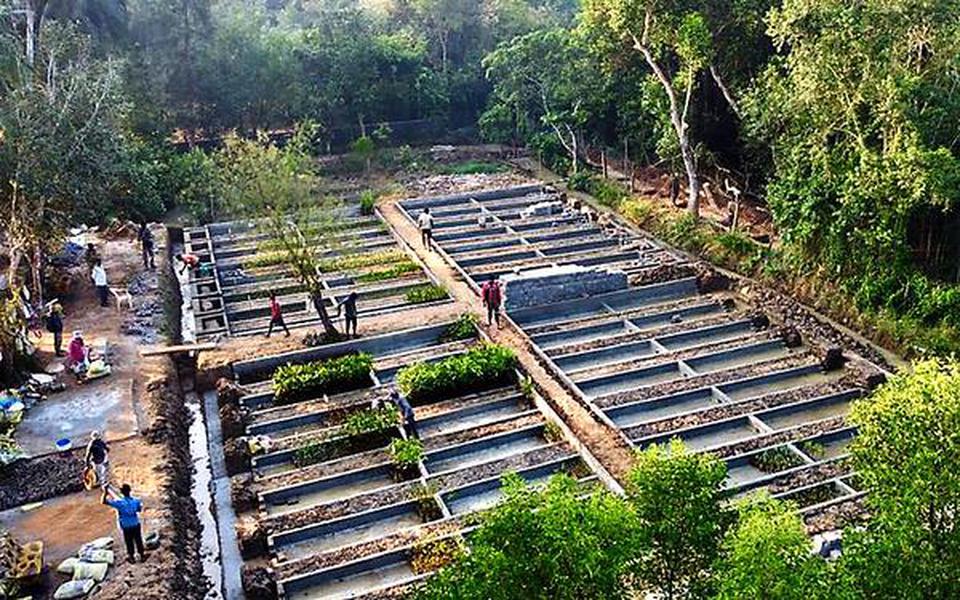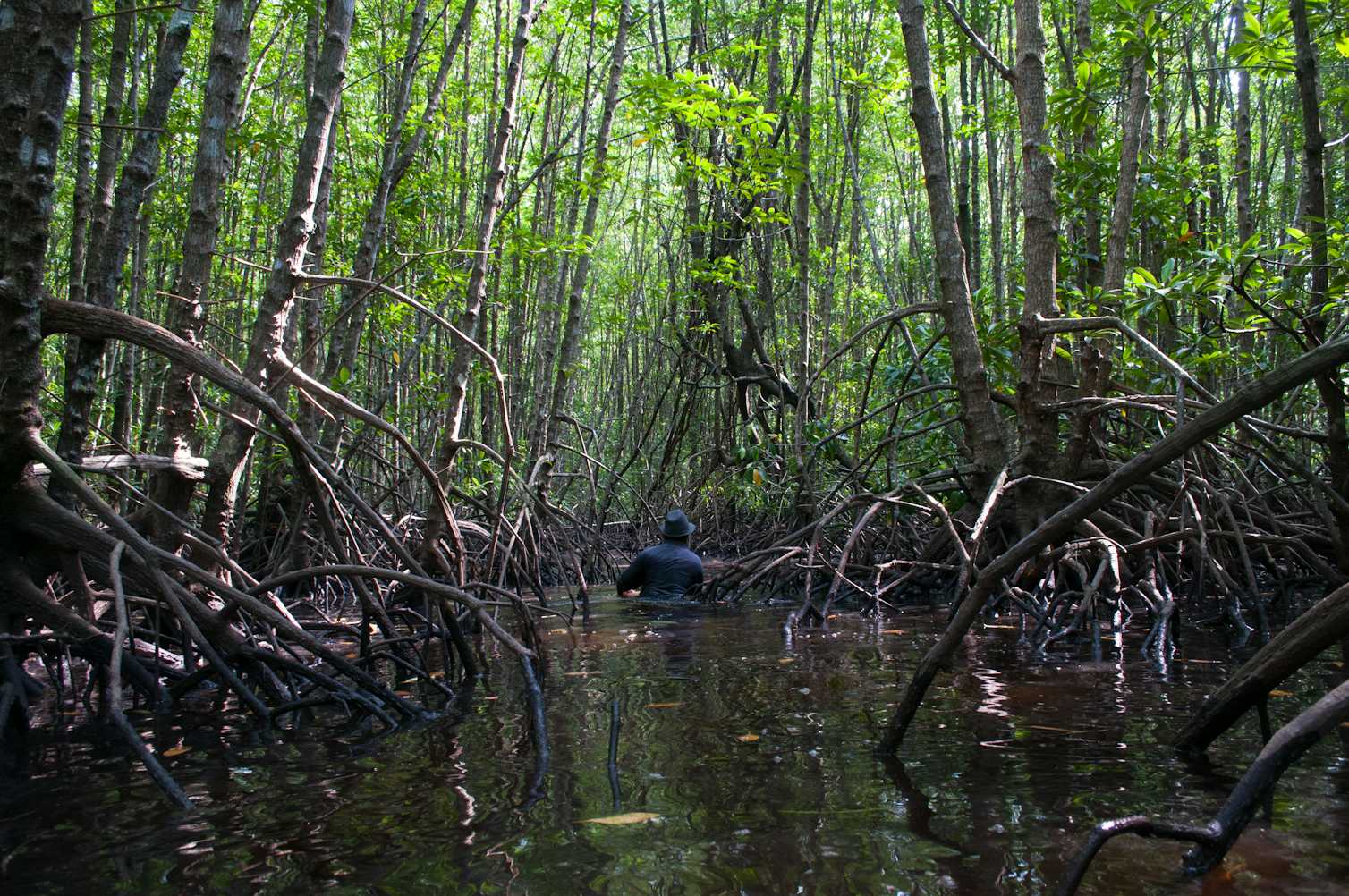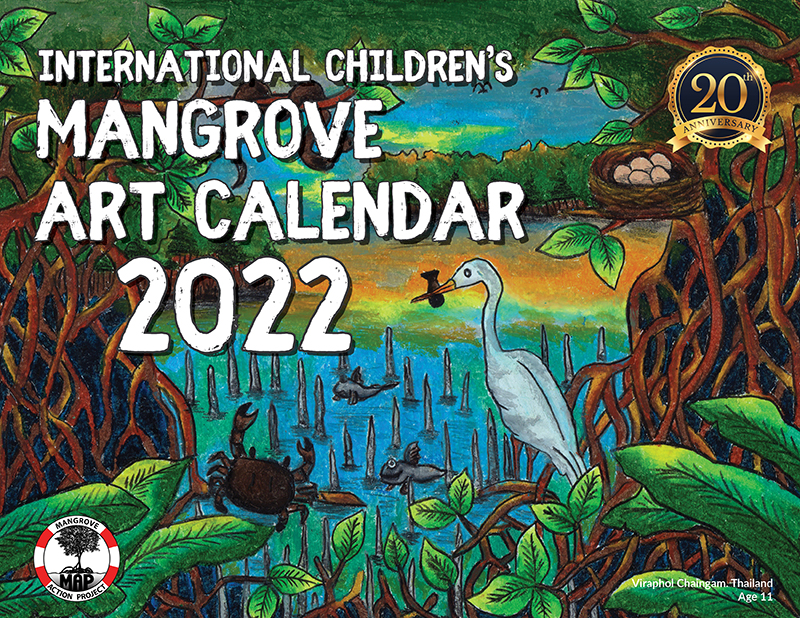MAP Website en Español haga clic aqui FEATURED STORY Odisha bid to preserve all mangrove species in a small nursery

INDIA – Odisha’s Forest and Environment department officials are elated over rise in mangrove forest in the State, but what excites them more is a small nursery, which may go on to become a field gene-bank for the coastal ecosystem, especially mangroves. Conservation of many important species poses serious challenge as not all of them have seeds or capacity to reproduce vegetatively. Preserving important species in the field is considered as the best mode of conservation, and what can be the best place to preserve mangrove species than the Bhitarkanika National Park. Odisha’s mangrove vegetation constitute only 5.17% of India’s total mangrove cover, but its species diversity is second to none in the country. As far as species distribution in global-level is concerned, only Papua New Guinea has more mangrove species than that of Bhitarkanika in Odisha. “We have tried to showcase Bhitarkanika’s rich species diversity through a nursery being developed at Dangamal. So far we have managed to raise 32 species of mangrove in the nursery. We will double it up by collecting more species from Mahanadi delta areas in next six months,” said J.D. Pati, Divisional Forest Officer of Rajnagar Mangrove (Wildlife) Forest Division. READ MORE GLOBAL The surprising downsides to planting trillions of trees
:format(webp):no_upscale()/cdn.vox-cdn.com/uploads/chorus_asset/file/22865251/GettyImages_1191334683.jpg)
GLOBAL – Volunteers planted 11 million trees in Turkey as part of a government-backed initiative called Breath for the Future. In one northern city, the tree-planting campaign set the Guinness World Record for the most saplings planted in one hour in a single location: 303,150. “By planting millions of young trees, the nation is working to foster a new, lush green Turkey,” Turkey’s president, Recep Tayyip Erdoğan, said when he kicked off the project in Ankara. Less than three months later, up to 90 percent of the saplings were dead, the Guardian reported. The trees were planted at the wrong time and there wasn’t enough rainfall to support the saplings, the head of the country’s agriculture and forestry trade union told the paper. In the past two decades, mass tree-planting campaigns like this one have gained popularity as a salve for many of our modern woes, from climate change to the extinction crisis. Companies and billionaires love these kinds of initiatives. So do politicians. Really, what’s not to like about trees? They suck up carbon emissions naturally while providing resources for wildlife and humans — and they’re even nice to look at. It sounds like a win-win-win. There’s just one problem: These campaigns often don’t work, and sometimes they can even fuel deforestation. READ MORE 2022 Brings New Conservation Challenges—and Opportunities

GLOBAL – PEW CHARITABLE TRUSTS: As we kick off a new year, it’s a good time to highlight emerging conservation issues that warrant greater research and attention in 2022 and beyond. I recently joined 25 individuals from around the globe to conduct our 13th annual horizon scan—an effort to spot early signs of significant phenomena—to identify issues that are largely unrecognized but likely to have a large-scale impact on conservation within the next five to 10 years. In 2021, we canvassed more than 1,200 experts to identify a list of 80 issues. From there, the panel conducted in-depth research and held virtual discussions to further narrow the field. The resulting study, published in the January issue of Trends in Ecology & Evolution, outlines the top 15 issues for 2022. Several of the issues connect with The Pew Charitable Trusts’ research and advocacy, including commercial seabed mining, the use of environmental DNA (eDNA) to support biological monitoring, and the conservation and restoration of coastal wetlands. Here’s a summary of each of those issues and why they made the final list in our study. READ MORE AFRICA The Women Behind Kenya’s Mangrove Restoration

KENYA – You might have to look closely at the mud to see the thin, green propagules sticking through the ground. Women in multicolored hijabs and kangas are leaning over, tending to these precious seeds and saplings. After a couple of years, they will grow to become full-sized mangrove trees, with root structures visible both above and below the water’s surface. This wasn’t always a typical scene in this coastal village on Kenya’s northern coast. In fact, just a few years ago, most community members knew very little about how to protect the mangroves they depended on for a variety of resources like construction material, livestock fodder, medicine, honey, and even mosquito repellent. That all changed in 2018, when The Nature Conservancy and numerous other partners began a project to secure, restore, and improve the management of mangrove ecosystems in Lamu County. The mangroves in Kenya are threatened by overexploitation for wood products, land conversion, and pollution, and more than 40 percent of total mangrove area is now degraded. Lamu County, home to over 60% of Kenya’s mangroves and where TNC has already been engaged in community-based conservation, was the ideal place to focus mangrove conservation efforts. READ MORE Africa faces an uphill battle against western emissions to combat climate change

KENYA – The UN climate summit COP26, held in November 2021, focused the world’s attention on the urgent need to tackle climate change and concluded with 197 countries agreeing to the Glasgow climate pact. But opinions on the summit’s success are polarised. We owe a profound gratitude to the developing nations – including those from Africa – who agreed to the pact. In doing so, they chose not to insist that richer developed nations, whose historical and ongoing greenhouse gas emissions have largely caused the climate crisis, pay reparations to them for the damage they’ve inflicted. At the same time, the threat to GDP of African nations that are most vulnerable to these changes – meaning the amount of economic activity that stands to be lost if these changes are severe enough – is projected to increase from £660 billion in 2018 to over £1 trillion in 2023. That’s almost half of the continent’s projected GDP. Given these estimates, Africa’s climate resilience must exceed the global norm. And some steps are being taken to protect the continent against the worst climate consequences through investments from national governments and the private sector. Organisations such as the African Development Bank and the UN Environment Programme are also leading climate change adaptation measures, like working to protect mangroves on over 200 million hectares of land. READ MORE AMERICAS What’s In the Water?

USA – The tendency for most of us when it comes to human wastewater is out of sight, out of mind. Rarely do we consider what happens after we flush that toilet or turn off that tap. However, researchers at UC Santa Barbara have turned their attention and considerable computational power to the subject and its impacts on global coastal ecosystems. The results aren’t pretty, but they are enlightening. “The motivation behind this research was a desire to have a fine-grain understanding of how wastewater is impacting coastal waters worldwide,” said Cascade Tuholske, the lead author of a paper(link is external) that appears in the journal PLOS One. While research on terrestrial threats to coastal marine ecosystems often focuses on agricultural runoff and what happens when fertilizer and livestock waste winds up in the ocean, he said, few studies investigate what happens when human sewage does the same. READ MORE ASIA Womangrove collective reclaims the coast from shrimp farms

INDONESIA – In the years since it was formed, the business aspect of the collective has proved hard to sustain, with members citing the difficulty of getting goods from their remote islands to the right markets. But the women of Womangrove say they have benefited in other significant ways. “In the long term, these women are developing critical skills,” Hayati said. “We are heavily involved in various village programs but now we’re working to improve them too, something that didn’t happen before.” Some of the women who have been involved in the program have even become village officials thanks to the administrative and speaking skills they learned through their involvement in the various workshops conducted by Oxfam’s Restoring Coastal Livelihoods (RCL) program. Hayati said people in Tanakeke often see mangroves as just a source of firewood or building materials. She said one of Womangrove’s biggest achievements has been changing this mindset. “There is an emerging awareness of how important it is to protect mangroves because they protect the islands from erosion and the brunt of big tidal waves,” she said. “Women play a very important role in this because it is closely related to everyday life. It’s also about equality.” READ MORE Fishermen given compensation for releasing protected marine species

INDIA – Fishermen in the coastal districts of Maharashtra have received Rs 40.78 lakh as compensation in the last three years for safely releasing 260 protected marine species, including Olive Ridley and green sea turtles, that were accidentally caught in their fishing nets, an official release has said. This compensation is being paid as part of the scheme jointly launched by the state forest and fisheries departments in December 2018, which is aimed at conserving the rare and protected marine creatures, it said. So far, 138 Olive Ridley turtles, 67 green sea turtles, 5 hawksbill turtles, two leatherback sea turtles, 37 deer sharks, six giant guitar fish, humpback dolphin), four finless porpoises have been released into the sea, it said. It includes mangrove subsistence creation, mangrove afforestation, mangrove nature tourism, and removal of encroachments on mangroves, among others.Maharashtras mangrove cover is 32,000 hectares, it said, adding that while protecting mangroves, they are being given the status of reserved forests. READ MORE Indonesia aims for sustainable fish farming with ‘aquaculture villages’

Editor’s note: We at MAP remain vigilant concerning this plan by the government to revitalize its shrimp aquaculture programs while also stating its commitment to mangrove conservation and restoration. In the past, these two initiatives have not been compatible, and inevitably the quick profit motives of the shrimp farm industry have outstripped the conservation resolve of the government.- AQ
INDONESIA – The Indonesian government plans to have a network of dozens of villages with aquaculture farms by the end of the year, in a bid to spur the post-pandemic economic recovery by catering to global demand for farmed seafood. Indonesia’s fisheries ministry said in December that it has established six of these so-called aquaculture villages and would add 130 more by the end of 2022. The villages will cultivate high-value aquaculture commodities, including shrimp, lobster, crab and seaweed. “Boosting production of commodities for exports comes first,” TB Haeru Rahayu, the ministry’s director-general of aquaculture fisheries, said at an online event. He added the program would strengthen the country’s food security and create new jobs. Developing aquaculture farms in Indonesia has typically entailed clearing carbon-rich mangrove forests to build the shrimp and fish ponds, said Abdul Halim, executive director of the Center for Maritime Studies for Humanity. Over the past three decades, Indonesia has lost nearly half of its mangrove area, according to the Center for International Forestry Research (CIFOR). In 2021, President Widodo set an ambitious goal of replanting mangroves on 600,000 hectares (1.5 million acres) of degraded coastline by 2024. READ MORE OCEANA St Kilda mangrove remediation could cost ‘tens of millions’ unless action is taken

AUSTRALIA – A South Australian senator has warned that taxpayers could end up footing the bill to fix an environmental disaster in the St Kilda mangroves, north of Adelaide. The Environment Protection Authority (EPA) is still investigating the events of 2020, when water seeping from neighbouring salt ponds is believed to have caused a large section of mangroves to die. Freedom of Information documents obtained by independent senator Rex Patrick show that salt ponds operator, Buckland Dry Creek, did not have a bond in place as part of its environmental agreement with the South Australian government. “The government has spent $2.7 million just looking at how the site would be remediated,” Senator Patrick said. “I suspect remediating 28 kilometres of salt ponds is going to run into the tens of millions of dollars. Right now, the responsibility for that does rest with the miner but we don’t know what could happen in the future. READ MORE FEATURED VIDEO CAYMAN ISLAND CENTRAL MAGROVES
An aerial view of Grand Cayman’s Central Mangrove Wetland – the largest contiguous mangrove wetland in the Caribbean. Under threat from uncontrolled development.
 Like this newsletter?
Pease consider donating to MAP to keep it going.
Giving could never be easier  | ACTION ALERTS Strengthen 60 Women Farmers in El Salvador
DONATE HERE Stop the East African Pipeline that threatens the planet #STOPEACOP – CLICK HERE Stop construction work on a private port In Defense of the Quilombo Boca Do Rio TAKE ACTION! Tell Sumitomo to stop building polluting coal power in Bangladesh! TAKE ACTION!
Like this newsletter? Pease consider donating to MAP to keep it going. Giving could never be easier 
MAP Website en Español
haga clic aqui LAST CHANCE – ORDER YOUR 2022 MAP CHILDREN’S ART CALENDER HERE
 13 Year old Linda Li “Mangrove Adventure” from Kid Dream Art School

WATCH NOW 
Restoring The Natural Mangrove Forest
Watch movie

Community Based Ecological Mangrove Restoration in Rufiji Delta VIEW VIDEO
Video: Mangroves for the Future
View Here WANT TO GET INVOLVED?
Follow and Join MAP!    
Like this newsletter? Pease consider donating to MAP to keep it going. Giving could never be easier 

Interested in connecting or working with MAP? Check out our opportunities here 
MANGROVE ISSUES Want to learn more about mangroves?
Our short presentation will give you a better understanding of the issues we are working to solve. WATCH PRESENTATION What is CBEMR? Download MAP’s 2 page CBEMR Information Sheet containing links to all MAP’s CBEMR resources – CLICK HERE View MAP’s uploaded Videos at
MAP Video Gallery Question Your Shrimp Consumer/Markets Campaign!
WATCH VIDEO Mangroves: Guidebook to Malaysia – Click Here SHARE MAP’S VISION
CLICK HERE to watch short introductory video. Together we can work “at the roots of the sea”. Our short documentary, Reducing the Risk of Disaster through Nature-Based Solutions : Mangroves 
Marvellous Mangroves Curriculum The Marvellous Mangroves Curriculum begins with a simple philosophy – getting future generations to not only learn about, but understand the importance of mangrove forests. VISIT 
The award-winning Marvellous Mangroves (MM) curriculum educates children on the importance of mangroves and their ecological functions, teaching them about modern challenges and mechanisms for sustainability. VIEW VIDEO Marvellous Mangroves Curriculum in Bangladesh – WATCH VIDEO
MARVELLOUS MANGROVES IN BRAZIL
En Portuges 
Marvellous Mangroves – A Curriculum-Based Teachers Guide.
Like this newsletter? Pease consider donating to MAP to keep it going. Giving could never be easier 
“Question Your Shrimp” Campaign Question Your Shrimp – is it really sustainable? Sign the Petition
Note to Our Readers: We strive to keep active links in our newsletter. However, due to circumstances beyond our control, occasionally links to stories may become broken. If you find a link to a story is not functioning, please cut and paste the headline into your browser search bar. In most cases you should be able to locate the original story.
Not yet a MAP News subscriber?
Click here to subscribe. 
|

:format(webp):no_upscale()/cdn.vox-cdn.com/uploads/chorus_asset/file/22865251/GettyImages_1191334683.jpg)






















